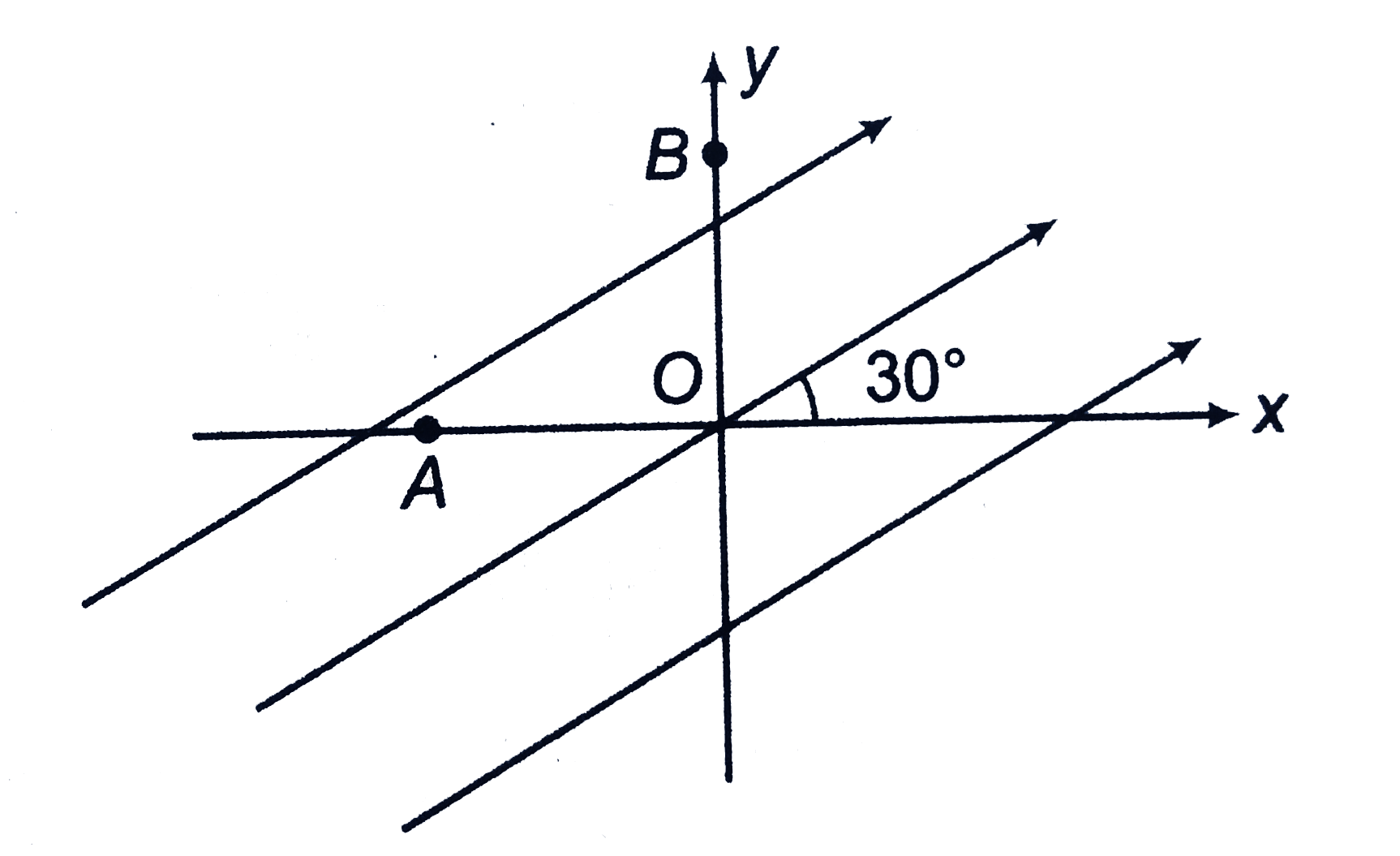An electric field of 20N/C exists along the x-axis in space. Calculate the potential difference VB−VA where the points A and B are given by
a. A=(0,0),B=(4m,2m)
b. A=(4m,2m),B=(6m,5m)
The correct Answer is:B, D
To solve the problem of calculating the potential difference VB−VA in an electric field of 20N/C along the x-axis for the given points, we will follow these steps:
Step 1: Understand the relationship between electric field and potential difference.
The potential difference VB−VA between two points in an electric field can be calculated using the formula:
VB−VA=−∫BAE⋅dr
where E is the electric field vector and dr is the differential displacement vector.
Step 2: Define the electric field vector.
Given that the electric field E is 20N/C along the x-axis, we can express it as:
E=20^iN/C
Step 3: Identify the points for part (a).
For part (a), the points are:
- A=(0,0)
- B=(4m,2m)
Step 4: Calculate the potential difference VB−VA for part (a).
Since the electric field is only in the x-direction, the y-component does not contribute to the potential difference. Thus, we only consider the x-coordinates:
VB−VA=−∫40E⋅dr
Here, dr=dx^i+dy^j. The dot product E⋅dr=20dx since dy does not contribute.
Now, we can evaluate the integral:
VB−VA=−∫4020dx=−20(x)40=−20(4−0)=−80V
Step 5: Identify the points for part (b).
For part (b), the points are:
- A=(4m,2m)
- B=(6m,5m)
Step 6: Calculate the potential difference VB−VA for part (b).
Again, we only consider the x-coordinates:
VB−VA=−∫64E⋅dr
The dot product remains the same:
E⋅dr=20dx
Now we evaluate the integral:
VB−VA=−∫6420dx=−20(x)64=−20(6−4)=−20×2=−40V
Final Answers
- For part (a): VB−VA=−80V
- For part (b): VB−VA=−40V
The potential difference VB−VA between two points in an electric field can be calculated using the formula:
VB−VA=−∫BAE⋅dr
where E is the electric field vector and dr is the differential displacement vector.
Given that the electric field E is 20N/C along the x-axis, we can express it as:
E=20^iN/C
For part (a), the points are:
- A=(0,0)
- B=(4m,2m)
Since the electric field is only in the x-direction, the y-component does not contribute to the potential difference. Thus, we only consider the x-coordinates:
VB−VA=−∫40E⋅dr
Here, dr=dx^i+dy^j. The dot product E⋅dr=20dx since dy does not contribute.
VB−VA=−∫4020dx=−20(x)40=−20(4−0)=−80V
For part (b), the points are:
- A=(4m,2m)
- B=(6m,5m)
Again, we only consider the x-coordinates:
VB−VA=−∫64E⋅dr
The dot product remains the same:
E⋅dr=20dx
Now we evaluate the integral:
VB−VA=−∫6420dx=−20(x)64=−20(6−4)=−20×2=−40V
- For part (a): VB−VA=−80V
- For part (b): VB−VA=−40V
Topper's Solved these Questions
- BOOK - DC PANDEYCHAPTER - ELECTROSTATICSEXERCISE - Level 1 Subjective15videos
ELECTROSTATICS
- BOOK - DC PANDEYCHAPTER - ELECTROSTATICSEXERCISE - SUBJECTIVE_TYPE6videos
ELECTROSTATICS
- BOOK - DC PANDEYCHAPTER - ELECTROSTATICSEXERCISE - Level 1 Assertion And Reason19videos
ELECTROSTATICS
- BOOK - DC PANDEYCHAPTER - ELECTROSTATIC POTENTIAL AND CAPACITORSEXERCISE - (C) Chapter exercises50videos
ELECTROSTATIC POTENTIAL AND CAPACITORS
- BOOK - DC PANDEYCHAPTER - GRAVITATIONEXERCISE - All Questions120videos
GRAVITATION
Similar Questions
An electric field of 10 N/C exists along the x-axis in space. Calculate the potential difference VB−VA where the points A and B are given by -
(a) A = (0, 0), B = (8m, 3m), (b) A = (8m, 3m) , B = (12m, 6m)
(c) A = (0, 0) , B = (12m, 6m)View SolutionAn electric field of 20 N/C exists along the negative x-axis in space. Calculate the potential difference VB−VA, where the points A and B are given by :
(a) A= (0, 0), B=(0, 4m)
(b) A=(2m, 1m), B=(4m, 3m)View Solution
Knowledge Check
- Question 1 - Select One
A uniform electric field of 400Vm is directed at 45∘ above the x-axis as shown in the figure. The potential difference VA−VB is given by
 A0B4VC6.4VD2.8V
A0B4VC6.4VD2.8V - Question 2 - Select One
Assume that an electric field →E=30x2ˆj exists in space. Then the potential difference VA−VO, where VO is the potential at the origin and VA the potential at x=2m is:
A(a) 120J/CB(b) −120J/CC(c) −80J/CD(d) 80J/C - Question 3 - Select One
A uniform electric field of 100V/m is directed at 30∘ with the positive x-axis as shown in figure. Find the potential difference VBA if OA=2m and OB=4m.
 A−200(3+√2)B50(2+√3)C−100(3+√2)D−100(2+√3)
A−200(3+√2)B50(2+√3)C−100(3+√2)D−100(2+√3)
A uniform electric field of 30NC−1 exists along the X-axis calculate the potential difference VB−VA between the points A (4m,2m) and B(10m,5m).
View SolutionAssume that an electric field →E=30x2ˆj exists in space. Then the potential difference VA−VO, where VO is the potential at the origin and VA the potential at x=2m is:
View SolutionIn a region where the electric field having magnitude 104NC−1, parallel to Y-axis exists. Calculate the potential difference between two points in that region, A (0, 2m) and B (0, 9m).
View SolutionA uniform electric field is along x-axis. The potential difference VA−VB=10V is between two points A (2m, 3m) and (4m, 8m). Find the electric field intensity.
View SolutionThe electric field in a certain region is given by E=5ˆi−3ˆjkv/m. The potential difference VB−VA between points a and B having coordinates (4, 0, 3) m and (10, 3, 0) m respectively, is equal to
View Solution

